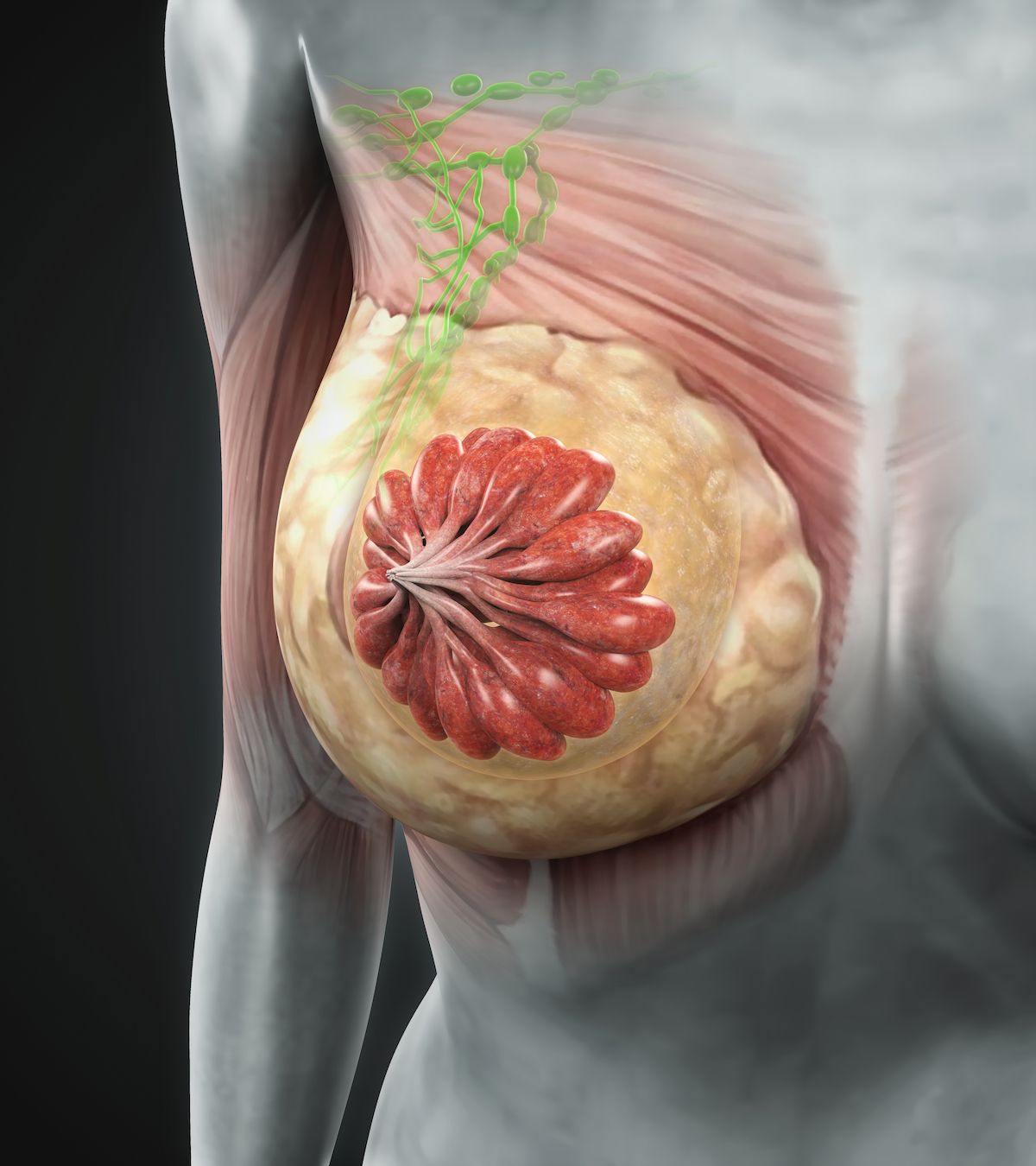Gene Assay May Predict Extended Letrozole Benefits in Breast Cancer Subsets
NSABP B-42 trial results show that the assay was predictive of extended letrozole therapy response, identifying a patient subset with improved outcomes.
NSABP B-42 trial results show that the assay was predictive of extended letrozole therapy response, identifying a patient subset with improved outcomes.

Although the 70-Gene MammaPrint (MP) assay was not confirmed to be predictive of distant recurrence (DR) in patients with hormone receptor (HR)–positive, early-stage breast cancer, the assay predicted responses to extended letrozole (Femara) therapy (ELT) and identified subsets of patients with low-risk disease who experienced improved outcomes with ELT. These findings from the phase 3 NSABP B-42 study (NCT00382070) were published in the Journal of Clinical Oncology.1
Data showed no statistically significant difference in ELT on DR between tumors classified as MP high risk (MP-HR) or low risk (MP-LR; P = .38). A statistically significant 10-year benefit of 3.7% was found for DR in MP-LR tumors, (HR, 0.43; 95% CI, 0.25-0.74, P = .002) but a nonsignificant 2.4% benefit was observed for DR with MP-HR tumors (HR, 0.65; 95% CI, 0.34-1.24; P = .19).
Compared with the overall population of the B-42 trial (n = 3903), a significantly improved prognosis for DR was noted among those in the translational MP cohort (n = 1866; P = .036). The study authors noted that the relatively low incidence of DR events—especially among tumors classified as ultralow-risk (MP-UL)—limited the study's power to assess this end point and detect significant differences in outcomes following ELT across subgroups.
There was a significant 10-year ELT benefit for disease-free survival (DFS) and breast cancer-free interval (BCFI) for MP-LR tumors not observed in those with MP-HR disease; the interaction between MP and ELT benefit reached statistical significance for these end points (DFS: interaction P = .015; BCFI: interaction P = .006).
At 10 years, ELT benefit for DR was not statically significant for MP-UL tumors (HR, 0.53; 95% CI, 0.13-2.15; P = .37), although a significant effect occurred in low-non-ultralow risk (MP-LNUL) tumors (HR, 0.42; 95% CI, 0.24-0.77; P = .003). This difference was not statistically significant (interaction P = .89). At 10 years, the DR rate was 4.0%, the DFS rate was 9.5%, and the BCFI rate was 7.9% among those with MP-LNUL tumors. These benefits in the MP-LNUL subgroup were significant and more pronounced compared with those for patients with MP-UL tumors, where the respective 10-year rates were 3%, 1.8%, and 4.1%.
“Overall, these findings may expand the clinical utility of MP beyond prognostic indication because they provide the first evidence suggesting that MP is predictive of [extended endocrine therapy] benefit,” wrote Priya Rastogi, MD, vice-chair for medical affairs at the National Surgical Breast and Bowel Project and medical oncologist at the Magee-Womens Hospital of the University of Pittsburgh Medical Center, with study coinvestigators in the publication.1 “Future analyses incorporating clinicopathologic characteristics could also further optimize patient selection.”
Included in the prospective-retrospective correlative study were eligible patients with clinical follow-up and available untreated primary tumor tissue. Developers in Irvine, California received tumor blocks, and MP test scores were generated and blinded to clinical outcome. These test results were included in the final clinical data set.
Of patients randomly assigned to letrozole or placebo in the B-42 trial (n = 3966), blocks were available for 2338 patients, with a final translational MP cohort consisting of 1866.
The primary end point of the correlative study assessing the predictive abilities of MP was DR. Secondary end points in this analysis included DFS and BCFI. In the original NSABP-B42 trial, the primary end point was DFS.2
The median follow-up time for patients included in the MP cohort was 10.4 years. In total, 706 (37.8%) and 1160 (62.2%) patients were MP-HR or MP-LR, with those in the MP-LR group further disaggregated into MP-UL (n = 252, 13.5%) and low-non-ultralow risk (MP-LNUL, n = 908, 48.7%) subtypes.
There were 102 DR and 457 DFS events observed in the translational cohort. A statistically significant ELT benefit for DFS was observed in the MP-LR group (HR, 0.67; 95% CI, 0.52-0.85; P < .001) but not in the MP-HR group (HR, 1.10; 95% CI, 0.82-1.47; P = .55). Furthermore, a 7.8% improvement was observed in patients undergoing ELT for MP-LR tumors vs placebo, contrasting with a –1.6% difference reported in patients undergoing ELT for MP-HR tumors compared with placebo.
In BCFI, the assumption of hazards proportionality was not satisfied between treatment groups for the MP-HR subgroup; a change point of 5.2 years identified a distinguishable statistically significant difference in ELT effect between MP-HR (HR, 2.77; 95% CI, 1.28-5.99; P = .01) and MP-LR (HR, 0.37; 95% CI, 0.21-0.66; P < .001) subgroups. Prior to 5.2 years, ELT benefit was similar between MP-HR and MP-LR subgroups.
References
- Rastogi P, Bandos H, Lucas PC, et al. Utility of the 70-Gene MammaPrint assay for prediction of benefit from extended letrozole therapy in the NRG Oncology/NSABP B-42 trial. J Clin Oncol. Published online July 24, 2024. doi:10.1200/JCO.23.01995
- Letrozole in treating postmenopausal women who have received hormone therapy for hormone receptor-positive breast cancer. ClinicalTrials.gov. Accessed August 14, 2024. https://tinyurl.com/2dhreevh